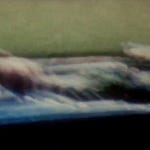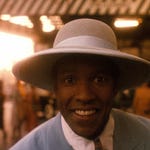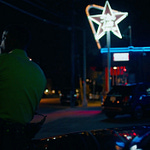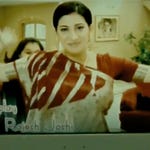Dear friends,
A century after production started, and 94 years since its first public screening, Abel Gance’s silent historical epic Napoléon is still being completed. The mere thought could no doubt give most working filmmakers (and a goodly number of critics) deep pause, if not shuddering anxiety. Yet, for a film so defined—in its very form, its voice—by its maker’s grand ambitions, surely there is no more fitting state for it than one of constant flux?
Gance wished this work to transform the cinema. In an immediate sense, history was against him, with unapproved and inferior cuts shipped to various markets that would help doom the film’s chances as a budding blockbuster and prevent Gance from working on his planned sequels. But with so many versions out in the world—none of which as long as the second cut, Gance’s seven-hour, yet still incomplete “version définitive” of May ‘27—Napoléon has weirdly succeeded in transcending the usual, tangible conditions of its form. Forget what we know of “director’s cuts” and even the re-discoveries of lost footage that continue to define our relationship with early cinema. This is a work with upwards of 20 different extant structures—and those are just the versions of note.
Gance himself would constantly tinker with his Napoléon throughout the following half-century. He attempted to secure funding for the remaining acts, but of course never succeeded. Instead, he turned to updates for the original footage, as a way of keeping up with the times: adding synchronised sound, new tinting and coloration and even shooting new scenes, including his own return to the role of Saint-Just in the 1950s. (Saint-Just was executed at the age of 26; Gance had already been nearing 40 when he played him in the mid 1920s.) His Austerlitz of 1960 was a star-studded attempt to recapture relevance for the ongoing Bonaparte project, but its fundamental failure, certainly when compared to the 1927 build-up, was its more conventional, commercial styling. In his own subsequent cuts, Gance’s friend and Napoléon acolyte Kevin Brownlow would essentially ignore these strange alterations so as to reclaim a kind of purity. So it is that, although the current BFI cut may count functionally as the most complete and most faithful restoration of Gance and editor Marguerite Beaugé’s original work, it is still one that bears these fascinating fundamental disconnects from the apparent (and often movingly ill-advised) intentions of the director over the intervening years.
All this to say that, a century on, the present Napoléon vu par Abel Gance works so well despite its rather precarious relationship to its own original form. There is still much missing material (though the version définitive is said to be soon getting a major Netflix-backed restoration from the Cinémathèque Française—historically, not the greatest Gance supporters), but at the same time footage is included that was not exactly in either of the original two cuts. So we’ll never just see the Gance Napoléon. It’s a shadow.
What continues to shine through is the vibrance of the cinematic ideas being thrown at the screen. We feel Beaugé’s steady hand during the more audacious montage sequences (what it must have been to construct the finale’s tripartite blizzard of imageries using the equipment of 1927!) and in other parts, variously, the seminal presences of contributors including cameramen Jules Kruger, Joseph-Louis Mundviller, Georges Lucas, Paul Briquet and Léonce-Henry Burel; assistant directors Henri Andréani, Mario Nalpas, Pierre Danis, Viacheslav Tourjansky, Henry Krauss and Alexander Volkoff; and the “chief technical director” Simon Feldman, whose role was, as we understand it, self-created. And—though it can be hard to parse on a first viewing—we feel the incredible commitment of Albert Dieudonné, channeling his title role and giving this creative whirlwind its iconic centre.
Napoléon was intended as an ecstatic evocation of greatness, seen through one singular national figure. What remains of this is only really an elliptical sketch, overtaken instead by the brilliance of those doing the sketching. Napoléon Bonaparte is long dead, but Napoléon vu par Abel Gance could well live forever.
—Calum & Eddie
















Share this post